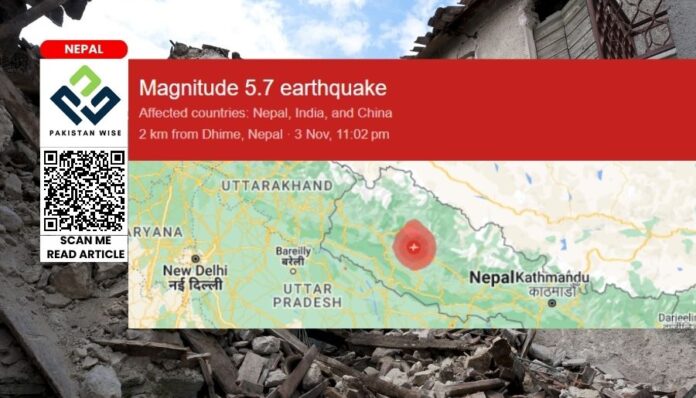In the dead of night, a devastating earthquake shattered the tranquility of western Nepal, claiming the lives of over 150 people and leaving countless others in dire need of assistance. This tragic event unleashed a sense of urgency as authorities and aid organizations mobilized to provide relief to the thousands of families now left exposed to the elements, their hearts heavy with the fear of looming aftershocks.
The Heroic Efforts of Rescuers
Amidst the chaos and destruction, rescue teams worked tirelessly, battling landslides and debris that had blocked the roads leading to the remote mountainous villages of Karnali Province, where the earthquake’s epicenter was situated. This herculean task was compounded by the lack of communication with the isolated areas. Officials warned that the death toll could continue to rise as they reestablished contact with the regions cut off from the outside world.
Magnitude Discrepancies
The immediate aftermath of the earthquake was marked by confusion due to conflicting reports of its magnitude. The US Geological Survey initially rated it at 5.6, while Nepal’s National Earthquake Monitoring and Research Center reported a magnitude of 6.4, accompanied by several smaller aftershocks in the hours that followed. Such disparities in magnitude assessments are not uncommon, and as more data is collected, these numbers may undergo revisions.
The Nightmare Unfolds
The earthquake struck during the darkest hours of the night, catching most people in their sleep. The tremors were so powerful that they reached as far as India’s capital, New Delhi, hundreds of miles to the west. In the affected villages, families spent a sleepless night exposed to the elements, their homes reduced to rubble. Approximately 5,000 houses lay either destroyed or damaged, leaving entire communities bracing for another night beneath the open sky.
Tapendra Rokaya, a witness to the tragedy, painted a grim picture of the scene, saying, “There was not a single house standing tall. Every house was damaged. Only dirt flying under the sky.” Fear of aftershocks forced everyone to seek refuge under tents or in the open.
The Struggle in Jajarkot District
In the Jajarkot district, where the earthquake originated, the death toll reached 105, and approximately 500 people were injured, as reported by Harishchandra Sharma, a senior officer in the local administration. The resilience and determination of these communities in the face of such a catastrophic event are truly remarkable.
The Road Ahead
As the affected communities grapple with the immediate aftermath of this devastating earthquake, the need for continued relief and support is paramount. The heroic efforts of the rescuers, the confusion surrounding magnitude assessments, and the remarkable resilience of the people in the face of adversity all serve as a testament to the human spirit’s capacity to endure and overcome even the most challenging of circumstances.
In the days and weeks ahead, the world will watch as Nepal comes together to rebuild and recover, proving that even in the face of tragedy, there is hope, unity, and the unwavering strength of the human heart.

